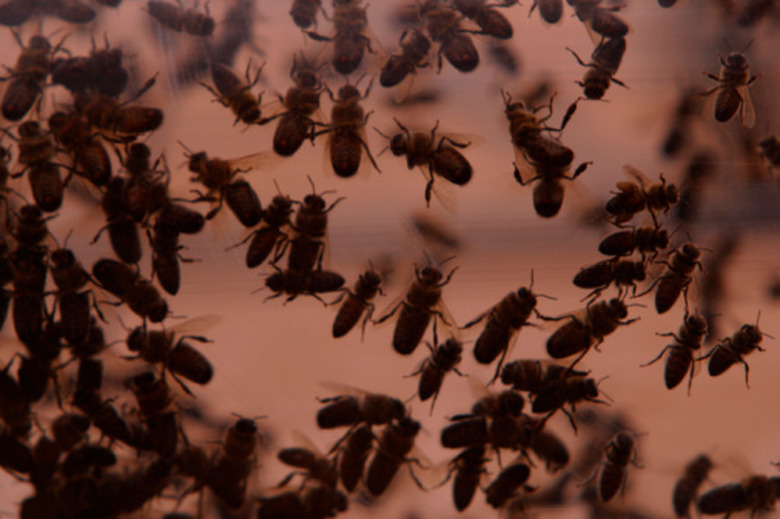What Are The Harmful Effects Of Insects?
Insects are the most diverse group of animals on the planet and perform many important roles. They are essential components of natural ecosystems, where they pollinate plants, spread seeds, help decompose deceased organisms and act as a source of food for other creatures. They are a rich source of protein for people and livestock and provide a variety of valuable products, such as honey, dyes, waxes and silk. However, many insects can cause significant negative impacts on humans and the environment.
Insects as Agricultural Pests
Insects as Agricultural Pests
Negative impacts from insects are a significant threat to agriculture. Harmful insect pests include caterpillars, grasshoppers and locusts, which eat the leaves, seeds and fruits of crops. At times, locusts can form massive plagues of several million, which can cause widespread damage to crops and lead to famine events. Other insects, including aphids, thrips and weevils, suck the sap from plants, which can affect plant growth and development and make plants more susceptible to disease.
The harmful effects of pests also include carrying and spreading plant diseases that impact agricultural crops. Options for the control of insect pests include spraying pesticides, using smoke, applying irritating chemicals such as capsicum and encouraging biological control by natural predators.
Climate Change and Insect Damage
Climate Change and Insect Damage
Climate change can increase the amount of damage caused by insects. One example is the European pine beetle, which was introduced to North America and has caused significant damage to pine trees. Due to a warming climate, the beetle's range is extending northward and causing extensive damage to pine plantations and forests.
Insect Bites and Stings
Insect Bites and Stings
Many harmful insects can cause painful bites and stings. This can be simply irritating if a single bite or sting occurs, but stinging insects that live in colonies can cause significant injury and even death. Two examples include the fire ant and the African honeybee, both of which are extremely aggressive when their nests are disturbed.
Spread of Disease
Spread of Disease
Diseases from insects can cause serious illness and death in humans and other animals. The most deadly animal on Earth is the mosquito, due to its role in the spread of malaria and other diseases. It is estimated that 700,000 people die annually due to mosquito-borne diseases. The tsetse fly, found in Africa, spreads the disease known as sleeping sickness, which is 100 percent fatal without treatment. Other disease-carrying insects include kissing bugs, which carry the parasite that causes Chagas disease, and fleas, which killed millions with the Black Plague in 14th-century Europe.
Building and Infrastructure Damage
Building and Infrastructure Damage
Insects can cause significant damage to houses, buildings and other infrastructure. Many species can cause structural damage to wooden construction materials. Some species, such as termites and powderpost beetles, consume wood directly as part of their diet. Carpenter ants do not eat wood but will chew out timber to build their nest hollows.
While not damaging the house directly, bees and wasps can build large nests in wall cavities and around support beams, which are not only dangerous to humans but are also difficult and expensive to remove. Other damaging insects include carpet beetles and fire ants. Carpet beetles attack textiles such as clothes, carpets and furniture, while fire ants are attracted to electrical fields and can cause power outages and electrical fires.
Impacts From Pest Control
Impacts From Pest Control
The use of pesticides can lead to negative impacts on human health and the environment. An unfortunate unintended effect of pest control has been to contribute to serious human diseases. Many of the most at-risk people are subsistence farmers in developing countries.
Pesticides can contaminate soil, water and vegetation within the environment and affect organisms such as birds, fish and beneficial invertebrates. These creatures often play a role in controlling insect pests through predation, and when they are killed off insect populations can increase.
Other methods of control have also caused unexpected side effects. The cane toad was introduced to Australia to control the cane beetle, which was damaging sugar cane crops. However, the cane toads have now increased hugely in their population and range and threaten native animals by eating smaller creatures and poisoning predators due to a toxin they produce for self-defense.
References
- The Active Times: Pests That Can Seriously Damage Your House or Apartment
- BBC News: The Rapid Spread of Australia's Cane Toad Pests
- Interdisciplinary Toxicology: Impact of Pesticides Use in Agriculture: Their Benefits and Hazards
- Government of Western Australia Department of Primary Industries and Regional Development: Insect Pests of Vegetables
- Field and Stream: The 12 Deadliest Insects in the World
- Bloomberg News: Millions of Beetles Are Wiping Out Forests All Across the World
- BBC Future: The Biblical Locust Plagues of 2020
Cite This Article
MLA
Michelle, Meg. "What Are The Harmful Effects Of Insects?" sciencing.com, https://www.sciencing.com/what-are-the-harmful-effects-of-insects-13406076/. 30 September 2021.
APA
Michelle, Meg. (2021, September 30). What Are The Harmful Effects Of Insects?. sciencing.com. Retrieved from https://www.sciencing.com/what-are-the-harmful-effects-of-insects-13406076/
Chicago
Michelle, Meg. What Are The Harmful Effects Of Insects? last modified August 30, 2022. https://www.sciencing.com/what-are-the-harmful-effects-of-insects-13406076/
